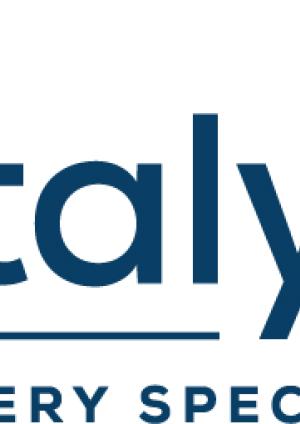10 April 2009
The NHS is off the critical list and even showing a healthy surplus. But the combined effects of the recession and major changes to the funding system threaten to destabilise the patient.
In financial terms, uncertainty looks like being the dominant theme for the English NHS in 2009/10. These are, of course, uncertain times, and until the April 22 Budget announcement no-one will really know what the year has in store. It is, however, increasingly clear that no protective bubble can safeguard an economic sector as significant as health from what’s happening in the wider economy – not even the apparent three-year resource certainty of the 2007 Spending Review.
All this comes after a period of considerable financial stability for the NHS, one that gives the lie to a media image of entrenched problems. The Department of Health’s analysis of the third quarter of 2008/09, published this March, forecasts an outturn surplus of £1.74bn for the financial year. If achieved, this would represent a £68m increase on 2007/08.
This level of performance is relatively consistent geographically, with only seven NHS organisations currently projecting an operating deficit at year-end. Moreover, this stability has been achieved at the same time as impressive improvements in performance, most notably in achieving the government target of a maximum 18-week wait between diagnosis and hospital treatment.
In recent years, the NHS in England has transformed its financial performance. Two years ago, the net NHS surplus was £510m; last year the equivalent amount was £1.66bn. (This encompasses NHS trusts and primary care trusts, but omits a further £514m surplus in the foundation trust sector.) Along the way a substantial financial reserve has been amassed. If it rankles with the NHS that the Treasury now has designs on its accumulated wealth – central controls mean that only around £800m of the surplus can be released over the next two years, and serious doubts remain about what might happen to the balance – at least the store cupboards are full.
The irony is that despite heroic efforts to get back into the black and re-establish sound financial management, much of the forthcoming uncertainty is self-inflicted. The storm clouds that are now sweeping in have been visible on the horizon for at least a year. For 2009/10 is the year when the major financial building blocks of the English NHS are simultaneously being reintroduced to the system after a major redesign.
There is not just a new resource allocation formula; not just a new way of calculating the payment by results tariff; not just a fresh approach to the controversial ‘market forces factor’ geographical weighting; but all three at once. And no-one really knows, as the NHS enters a new financial year, quite what the impact will be.
Resource allocation is, in some respects, the most straightforward of the major revisions, albeit an immensely politically sensitive one. The secretive Advisory Committee on Resource Allocation finally reported last autumn, allowing the revised formula to be used to set target PCT allocations for 2009/10.
Acra needed to balance a range of competing pressures, including keeping population data as up to date as possible in a more mobile age (asylum seekers, for instance, are now included in population projections); boundary definitions (GP practice lists don’t necessarily align with borough or county borders); and the scale of weighting to be applied.
It wrestled with complexities: for instance, how valid is the claim that health care inherently costs more for a scattered rural population than for a more densely clustered urban population? And is the true determinant of need old age (the formula has traditionally offered generous funding for over-85s, whether ill or not) or the approach of death?
Acra had also, perhaps, to take into account a more insidious factor: political pressure. All these complexities are ultimately about the most appropriate way of measuring health need, within an assumption that NHS resources should match need. But this approach leads to large transfers of resources from the Southeast of England to the rest of the country. This has been increasingly irritating some home counties politicians, who have been suggesting that NHS and other public sector expenditure should bear more relation to the local tax take.
A similar pressure – the ‘because we’re worth it’ rationale – can be found elsewhere in Europe: in Italy across the North-South divide, for instance, and in Belgium across the language boundary.
It is proving less than straightforward to assess the actual impact of the new formula. Clearly a number of PCTs, especially in and around London, now find themselves significantly over target and should, in principle, be net resource losers for the foreseeable future. Richmond & Twickenham PCT is now 23.8% above target (compared with 13% in 2008/09), suggesting big cuts ahead for health services in southwest London (see table overleaf). Westminster (22.7% above target) and Kensington & Chelsea (22.1%) find themselves similarly embarrassed.
At the other end of the spectrum, areas such as Bassetlaw (10.6%) and Barnsley (9.3%) are well below target levels of funding.
However, the impact of the new resource allocation formula will be softened by the economic context. Ministers will fight shy of actually taking resources away from over-target areas. Their preference has always been to rebalance resource distribution over a number of years through differential allocation of growth. Yet a policy that worked well enough while annual growth percentages were relatively high will probably seem painfully slow in the current context. For 2009/10, ministers have decided on a ‘pace of change’ that will still give the most over-target PCTs 5.2% growth, with a further 5.1% in 2010/11. Bassetlaw and Barnsley will, it would seem, have to wait.
The impact of changes in the payment by results tariff, however, is immediate, and is the revision currently causing most concern among NHS finance directors. The tariff, or price list, uses an analysis of clinical activity known as health care resource groups to record and reward what happens in hospital (and, to a lesser extent, outside it). Each HRG has a price attached to it, derived from average costs. In essence, what is taking place from April 2009 is a simple migration from one version of HRGs (HRG3.5, with some 650 individual categories) to another (HRG4, which has around 1,400 separate categories).
The Department of Health’s intent has been to introduce a more subtle form of analysis – in the jargon, one with greater ‘granularity’ – to support commissioners aiming to rebuild ‘care pathways’. But the transition process has been fraught from the outset. Back in 2006/07, when trusts first began to collect HRG4 data, some were slow to adapt and the quality of clinical coding dipped sharply. In the summer of 2007, finance departments should have been matching 2006/07 activity and expenditure for the ‘reference costs’ that would form the basis of the 2008/09 tariff. Instead, they faced a nightmare of incomplete data and questionable allocations. The department reluctantly took heed of warnings and deferred the introduction of HRG4 for a year.
But HRG4 is now live and other significant changes to payment by results are being made. One is the introduction of a new ‘same day’ tariff for day surgery; another is the use of ‘non-mandatory’ detailed prices for outpatient procedures and for diagnostics. And then there’s the redesign of the complex ‘market forces factor’ top-up used to weight the tariff for regional cost differences. In 2008/09, the scale of this top-up reached 42% in central London. Revisions for 2009/10 dampen the impact of the factor (switching the resources thereby released into tariff prices) and change the route by which the top-up is paid, so that trusts receive it from PCTs rather than the DoH.
It’s all very complex, and no-one yet knows what the impact will be. Initial ‘road testing’ of the 2009/10 tariff, which ended in January, suggested marked swings in trust income, although no overall pattern of gainers and losers. The department delayed, adjusted, and then finally issued the 2009/10 tariff in February. But because of the complexity of the changes, many trusts are still finding it hard to understand what the year holds in store.
The department defends its decision to proceed on the grounds that the NHS’s accumulated reserves put it in a strong position to cope with volatility. Strategic health authorities, meanwhile, have been hurriedly introducing local guidance, especially around the use of non-mandatory tariffs.
And everywhere in the system anomalies are starting to come to light. The chief executive of one northern hospital trust states that ‘the non-mandatory items, particularly payment for outpatient procedures, would benefit us to the tune of £10m, which our PCT refuses to pay’. The Association of British Healthcare Industries, which represents the manufacturers of prostheses, estimates that HRG4 switches a cool £68m nationally out of funding for knee replacement surgery, with a heavy potential impact on access to that procedure.
As late as March 31, the DoH increased the supplement payable under payment by results to specialised children’s trusts (such as Great Ormond Street) from 63% to 78%. The additional cost of £25m is perhaps less significant than an impression of a weakening of overall financial control as major changes take place.
Meanwhile, a further sequence of policy initiatives and developments, each with sizeable financial implications, will preoccupy health service managers over the coming two years. The list includes:
- payments to hospital trusts based on quality of care
rather than the volume of clinical activity. In the coming year, 0.5%
of total contract values will be based on quality, under an initiative
known as Commissioning for Quality and Innovation (Cquin). The value of
Cquin payments is expected to grow in 2010/11
- pilot schemes for personal health budgets, mirroring
initiatives in social care. The scope of personal budgets remains
uncertain, and the potential implications of direct payments – the
extent of regulation, the legitimacy or otherwise of ‘top-up’ payments,
the legal complexities – are causing considerable anxiety, especially
among NHS commissioners
- pledges on the sustainability of resource use, including a commitment to a 10% reduction in carbon emissions by 2015
- a high-profile policy commitment by Health Secretary Alan Johnson to phasing out mixed-sex wards. The switch is to be reinforced by financial penalties for non-compliant hospital trusts as soon as April 2010
- uncertainty around NHS access to Private Finance Initiative funds to support capital investment, with only 11 of the 22 schemes planned by the DoH in 2007 still intact.
It’s not exactly a picture of stability. While no single initiative necessarily represents a financial problem, the combined effect of multiple changes, introduced in parallel without proper testing, is unknown.
This is worrying. Health minister Lord Darzi’s report, published last summer, confirmed major changes in the emphasis of English health policy. Beyond a media debate that centred on polyclinics and the future of GP practices, Darzi identified the two main themes for the NHS in the years to come as personalisation (essential for effective care of an ageing and chronically ill population) and quality (in terms of both clinical outcomes and patient perceptions).
But the freedom to redirect policy relies in turn on the achievements of recent years and, crucially, on financial stability and productivity being maintained. Quality, however it is measured, cannot be at the expense of a return to long waiting lists. And in the context of a shrinking economy and ever more challenging efficiency targets, the NHS cannot afford to return to financial volatility and unpredictability.
The true risk for 2009/10 lies in implementing a more complex tariff without, seemingly, the controls needed to identify and manage the in-year impact, or leaders acknowledging their importance. The irony is that the NHS might surrender its hard-won financial stability, without gaining any clear prize beyond a vision of the ‘market’ that already feels like yesterday’s agenda.
















